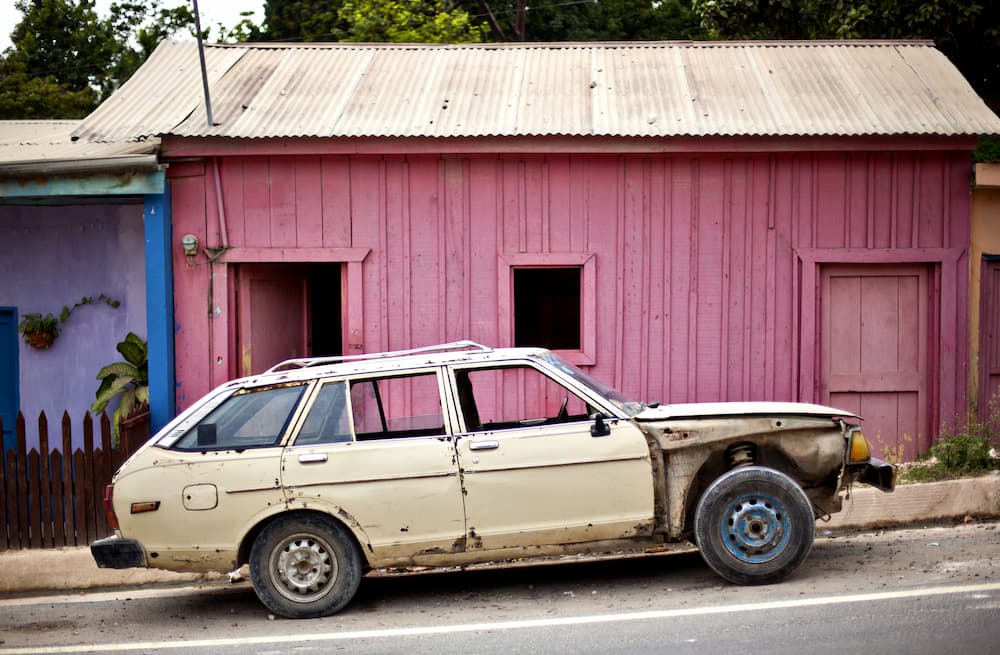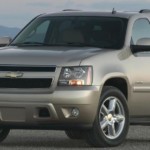For those old enough to remember, Neil Sedaka once sang, “Breaking up is hard to do.” Actually, he sang it twice—first as a pop song in the ’60s and then as a ballad in the ’70s. Although Sedaka was likely referring to an interpersonal relationship, he could very well have been singing about trading an old model vehicle in for a newer one at a used car lot.
It’s understandable, Neil. We get attached to our vehicles, giving them names and attributing personalities to them. We also have some of our fondest memories in our cars and trucks—hence why so many singers mention their old cars in their songs. Bob Seger sings about making love in the back of his ’60 Chevy in “Night Moves.” Neil Young wrote an ode to the 1948 Buick Roadmaster Hearse he named “Mortimer Hearseburg” in his song “Long May You Run.” They are not alone. We have all gone through the process of letting go of an old, beloved vehicle. These are the vessels that took us on family road trips, facilitated our dating escapades, bore the burden of our errands alongside us, and were just fun to cruise around in. However, to quote another Neil Young song, there “Comes a Time” when you need to replace your current vehicle with a newer model.
Time of the Season
Economists divide each year into quarters. The first ends on March 31, the second on June 30, the third on September 30, and the fourth and final on December 31. In this way, they can track leading and lagging indicators, make predictions about things like unemployment and inflation, and help business professionals plan accordingly. This is the same with automakers.
Most brands start releasing next year’s model in the fall. So, for example, the 2023 models began appearing in the fall of 2022. Automakers understand that many people may buy a new car for Christmas, when employers are more likely to distribute bonus checks. This is why selling your old car in the third and fourth quarters of a calendar year is probably not a good idea. You will end up competing with the automakers, and—let’s face it—it’s hard to get people interested in a pre-owned when all of next year’s models are debuting at the same time.
Conversely, you may have better luck selling or trading in your old vehicle in the first two quarters of the year. The gleam is off of the rose with the new models, and most of the folks who buy new will have already gotten their latest car, truck, SUV, or EV. This means two things. First, dealers may have many new cars in inventory that they are looking to move as the new car buyers dry up. This means you may get a better deal on a new car in the spring than you would have in the fall or winter. While you may not have as great a selection of colors, you should do much better on price. Second, you may get more money—or a better trade-in value—as the dealerships look to increase their used car inventory. Either way you look at it, you should do better if you pay attention to the time of the season.

Fixing a Hole
I had an economics professor in college who drove a Dodge Dart that was older than his students. He’d kept this car running for almost 30 years. You’d see him pull up in this little old car, putt-putting his way into the faculty lot every day, parking among the gleaming Buicks, Cadillacs, and BMWs of the other staff members. This professor swore by his Dodge Dart; he was going to wring every last dollar of this used car he’d bought for practically nothing. However, when one of us would point out that the fuel economy on this car was less than optimal, and that he was paying big money to keep it serviced and maintained, he’d scoff that we had no idea what we were talking about. Well, this is probably why he gave me a B in his class instead of an A. Still, I think I was right about this one.
As vehicles age, their performance declines. This is simply a fact that your vehicle has moving parts that begin to wear down over time. As a result, you will not get as much mileage as you once did on a gallon of gas. In addition, you need to get routine maintenance performed on a more frequent basis in an older car. For example, you will need to get the oil changed more often. Also, older cars will begin crossing the threshold of needing repairs on their more costly items—like the brakes, the engine, and the transmission. In general, it will cost you more to keep your old car on the road than it will to purchase and maintain a newer model. These costs begin to add up. At some point, your old car becomes a Money Pit—a bottomless hole into which you throw more and more of your hard-earned dollars. This then becomes a simple question of economics, where your cost exceeds your benefit.
Money Changes Everything
Unless you are Bill Gates or Oprah Winfrey, odds are you are living on a vehicle budget. This is something we all are doing. Sure, it would be awesome to drive a Bugatti Veyron or a Rolls-Royce Phantom. But how many of us could afford the hood ornament on one of these classics, let alone the maintenance costs? As a result, we have to be realistic about the car we drive and the costs involved in keeping it running. This is especially so if you financed your old vehicle and are paying off a monthly loan.
As the mileage builds on your existing vehicle and the costs escalate, you may find yourself in the unenviable position of being upside-down on your loan. This means that the residual value of your old car is less than the amount you owe on your loan, and it will actually become an economic disadvantage to continue to pay the loan on your car. The increasing costs may also have put you in a position where you find it more difficult to pay your monthly loan. The last thing you want to have happen is to default on the loan. Not only will you risk losing your car to repossession, but you will also do significant harm to your credit rating. If this happens, you will find it hard to get financing for your next vehicle, let alone anything else the banks involve themselves with. If you are in this position, you should look into trading in your existing vehicle for a newer one that is more fuel efficient. This may have a slightly higher monthly loan payment, but this will be more than offset by your savings in gasoline and maintenance.
The Safety Dance
One other thing my old economics professor didn’t consider about his Dodge Dart was its lack of safety features. Automakers have been making exponential strides in increasing vehicle safety over the years. Many drivers are too young to remember a time when most cars didn’t have three-point safety restraints. Most only had lap belts. (Frankly, a lap belt may have been the only safety feature on my professor’s Dodge Dart.)
Since that time, automakers have added things like ABS brakes that can prevent locking up in certain situations. Vehicles today are also required to have things like multi-point airbag systems and rearview cameras. Unless you are driving my professor’s old Dodge Dart, you will probably already have these safety features on your current vehicle. If you are driving his old Dodge Dart, please accept my condolences, and tell my professor I said hello.
Many of the more recent vehicles feature advanced driver assistance features—things like pre-collision alert and lane-keeping assist systems—which help to dramatically reduce the incidence of highway accidents. Over the last decade, an increasing number of automakers have been including these safety systems as standard equipment on many of their models. So, if you trade in your existing vehicle for a newer or more recent model, chances are quite high that the replacement vehicle will be safer than the one you are currently driving.

Break Up to Make Up
We know it’s hard to let go of your current vehicle. There is an emotional element that can’t be quantified in dollars. However, you will be doing yourself a favor by breaking up with your current car and buying yourself a new one. It may save you money, and it may even save your life. So, head over to your local used car lot and see what all they have to offer to replace the car you are currently driving. You may be pleasantly surprised by the options available to you—unless among them is my professor’s beat-up Dodge Dart. In that case, go somewhere else.



